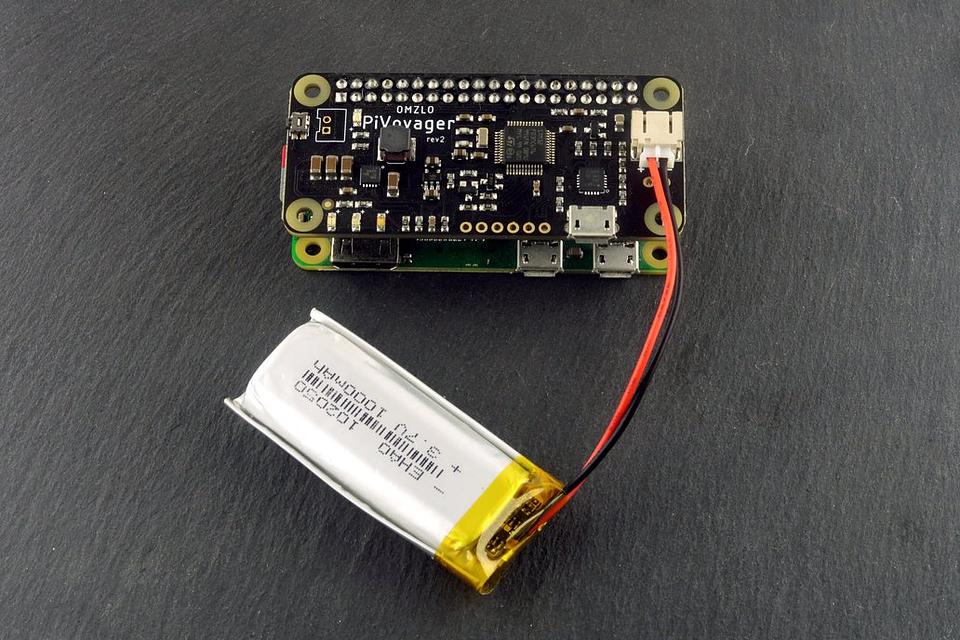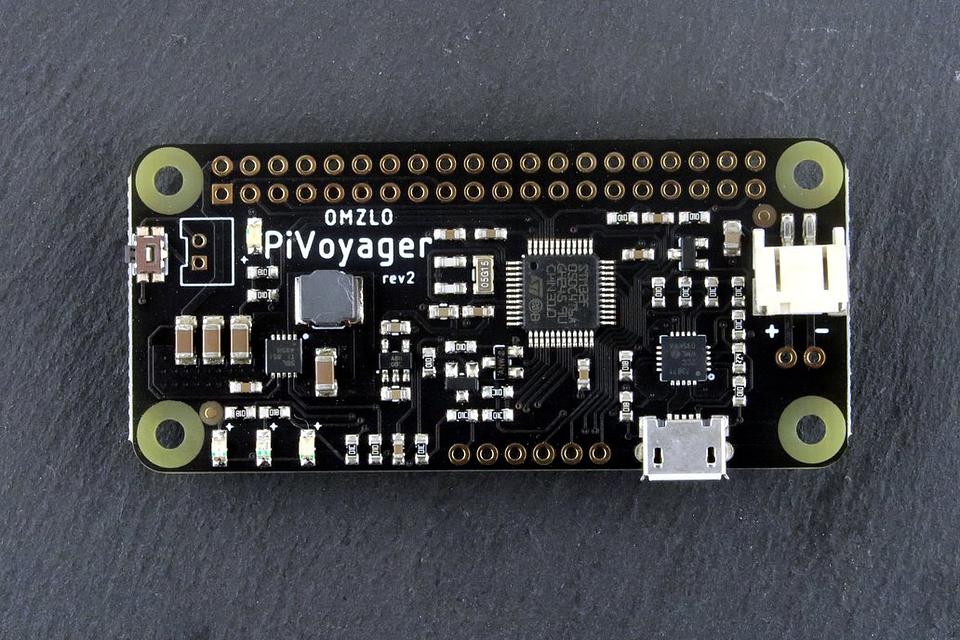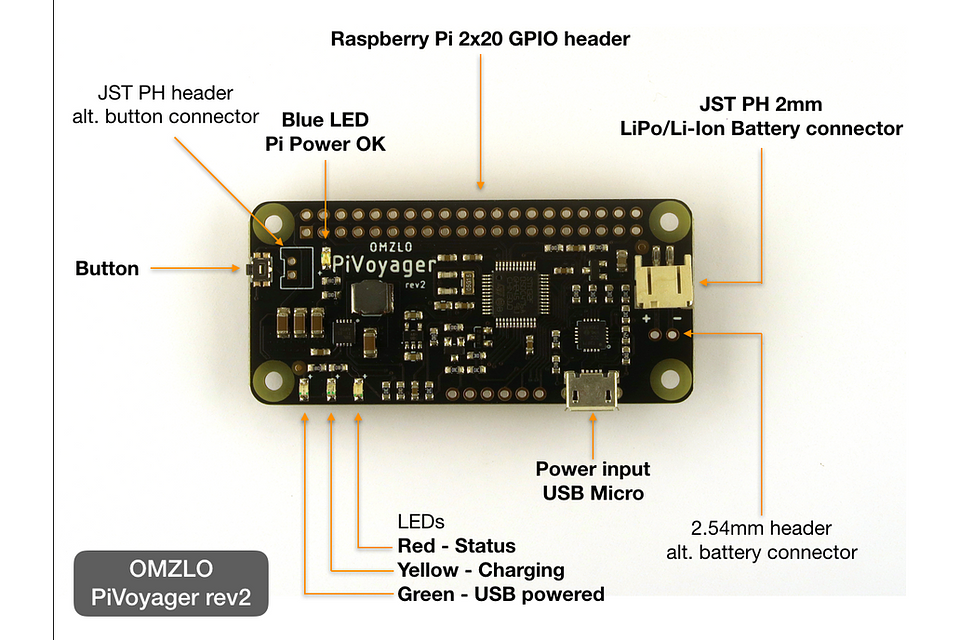Run your Raspberry Pi on battery and take it anywhere!
What is it?
The PiVoyager is uninterruptible power supply (UPS) for the Raspberry Pi designed to work with standard Li-Ion or LiPo batteries, featuring a programmable watchdog, automatic restart, and a real-time calendar. The PiVoyager is designed as a Pi Zero pHAT, but works on any Raspberry-Pi with a 40 pin header, including the Raspberry Pi 3B+ and the Raspberry Pi 4.
When the PiVoyager is plugged to a USB power source (USB micro-B) and a Li-Ion/LiPo battery, it will both power your Raspberry Pi and charge the battery if needed, with a charge current of 1000mA. If USB power is removed, the PiVoyager automatically switches to the battery and continues to power the Raspberry Pi at 5V (2.1A max), thanks to a boost converter.
The PiVoyager features a Real-Time Calendar (RTC), which can be configured to store the current date and time. The content of the RTC will be maintained for as long as there is a power source connected, even if the Raspberry Pi is powered down.
Thanks to provided software the user can fully control and monitor the PiVoyager:
- Monitor power status and battery voltage,
- Force the Raspberry Pi to fully shutdown after a specified delay,
- Act as a watchdog, powering down the Raspberry Pi if it becomes inactive,
- Power up the Raspberry Pi at a certain date/time (alarm),
- Power up the Raspberry Pi after a certain delay following a shutdown.
- Update the firmware through I2C thanks to a built-in bootloader.
For more details, including software download instructions, see our documentation here.
Hardware
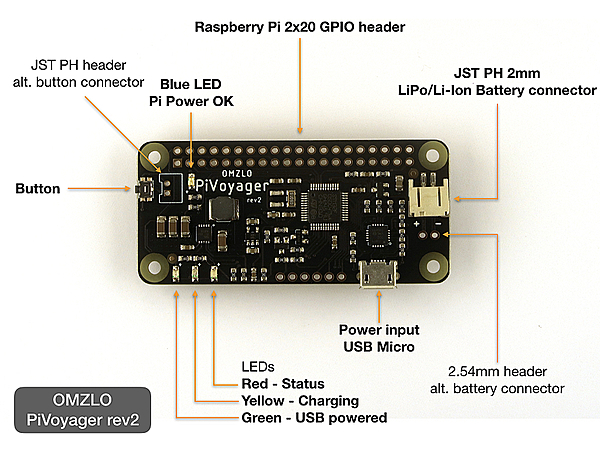
The PiVoyager has four indicator LEDs, 3 at the bottom left and 1 at the top left:
- PG: green, indicates USB power
- CH: yellow, indicates charging status
- ST: red, indicates overall status
- 5V: blue, indicates that the Raspberry Pi is currently powered
The PiVoyager has a small button. Pressing this button for more than 3 seconds will shut down the Raspberry Pi. Once shut down, the Raspberry Pi can be restarted by pressing the same button. It is possible to add a JST PH header on the PiVoyager to connect your own tact switch as an alternative to the one provided on the pHAT.
The PiVoyager does not include battery protection circuity and should be connected to Li-Ion or LiPo batteries with their own protection circuit, using the two-pin JST PH header. An alternative 2.54mm 2-pin header is also provided for battery connection.
The PiVoyager is targetted at batteries with a nominal voltage of 3.7V, a charging voltage of 4.2V and supporting a charge current of 1000mA. The battery is considered as LOW if the voltage falls below 3.1V and will remain in LOW state until the voltage rises above 3.3V. At startup, the PiVoyager will refuse to power the Raspberry Pi when in LOW state and will wait for the battery to charge sufficiently first.
In general, in order to work reliably with a Raspberry Pi, the PiVoyager should always be connected to a battery, even if it's not charged.
Note that the PiVoyager may not work well when the Raspberry Pi is connected to power-hungry devices like SSD drives, due to current output limitations. This limitation is particularly true on the Raspberry Pi 4, which has a higher current consumption than previous models.
What's included
The PiVoyager comes with an unsoldered female 2x20 GPIO header with short leads. No battery is included but you can get one from your favorite maker store (Adafruit, Pimoroni, Sparkfun, etc.).
Optionally, for a small extra cost:
- The default GPIO header can be replaced by an unsoldered stacking 2x20 GPIO header with extra long leads.
- The default GPIO header can be soldered.
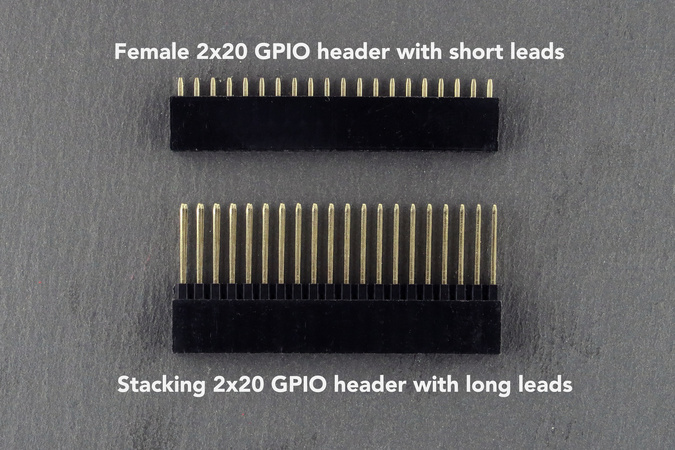
Note that the previous revision of the PCB was red. The new one is black.
Resources
More information can be found with the following links:
The PiVoyager is open-source/open-hardware. It features an I2C bootloader that enables to upload new or custom firmware if needed.
Links to code and documentation
Shipping policy
We ship twice a week, typically on Tuesdays and Fridays.
